In Vitro Fertilization (IVF) was pioneered by biologist Robert Edwards who, with gynaecologist Patrick Steptoe, fertilised the first human egg in a Cambridge laboratory in 1969. Louise Brown, the first test-tube baby was born on 25 July 1978, at Oldham General Hospital in England.
The International Committee Monitoring Assisted Reproductive Technologies (ICMART) estimates that globally, in the last 40 years, over 8 million babies have been born using IVF or other assisted reproduction techniques. Today, around the world, over half a million babies are born each year using IVF or other assisted reproduction techniques with over two million treatment cycles performed every year.
The World Health Organisation (WHO) estimates that globally over 10 per cent of women are classified as infertile and require assistance to enable conception. The current global IVF market, based on various studies, is estimated to be between US$ 10 billion to US$ 13.7 billion.
Whilst there is no definitive accurate data available for the Middle East, the estimated IVF market size drawn from a number of cycles by Colliers is roughly US$ 200 million for UAE, US$ 300 million for the Kingdom of Saudi Arabia (KSA) and US$ 500 million for Egypt.
This article provides an in-depth analysis as to why despite an overall high population growth rate in the MENA region, IVF remains so popular. The paper also identifies opportunities and challenges for operators and investors.
What is infertility?
Medically, infertility is generally recognised as the failure to establish a clinical pregnancy after trying over a 12-month period.
Infertility in the MENA region
In the MENA region, the population has increased from just over 100 million in 1950 to 500 million in 2020 and is expected to increase to 700 million by 2050. However, overall fertility rates have decreased from 7 children per woman in 1960 to less than 3 in 2020.
There are several reasons for the decline in family size, including socio-economic factors, such as an increase in female literacy rate, an aspiration to be economically independent, evolution and increase in the use of contraception and changes in cultural norms.
In addition, men are also choosing to start families later in life plus the rise in lifestyle diseases (diabetes and obesity) especially in the Arab countries has also increased the demand for infertility treatments.
Many studies, including those published by the Global Diabetes Community, has shown a direct and indirect link between diabetes and obesity on both male and female infertility. Based on Collier's research and interviews with industry experts, compared to 10 per cent worldwide, the infertility rate in the region is 15 per cent or even higher.
Infertility is split approximately 50 per cent male to female across the Middle East region. The growth in the UAE IVF sector stems not only from domestic demand but also from the success of the UAE, particularly Dubai, in promoting medical tourism and the availability of infertility treatment centres, which are of international standards.
IVF market sizing
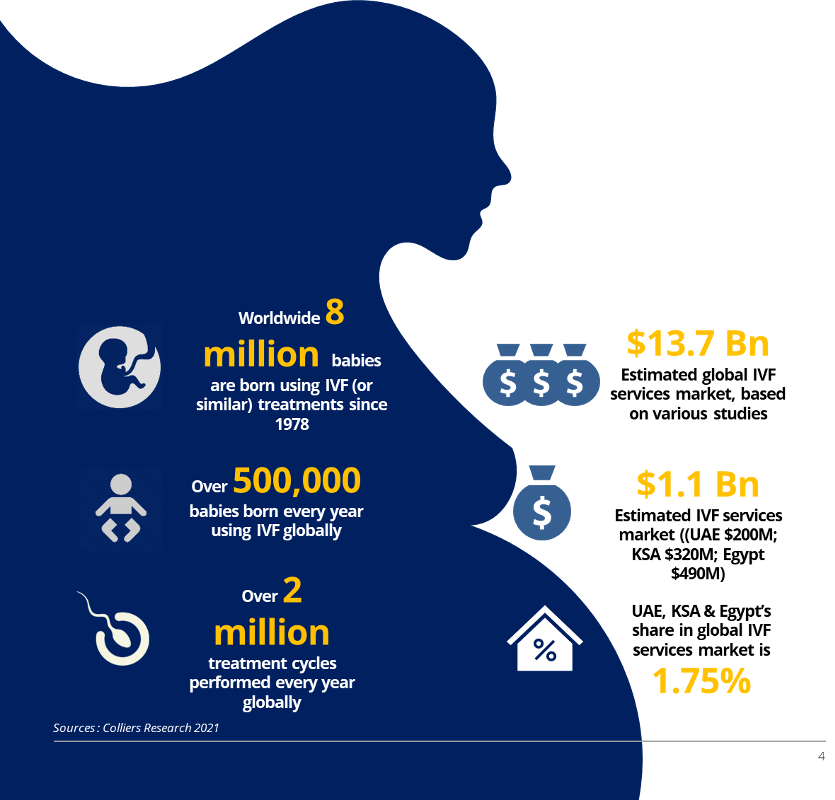
Why the Middle East is a growing market?
- Shift from a taboo to cultural acceptability: With the passage of time, the stigma attached to infertility treatment has faded. Men also accept male infertility as taboo and seek IVF treatment
- Fragmented market: Despite increased interest and investments, the fertility market in the Middle East remains relatively fragmented. The market is served mostly by individual clinics and as hospitals unit. Thus, offering opportunities for M&A.
- Gender Selection/Family Balancing: The UAE is one of the few countries in the world, allowing gender selection giving an opportunity to the parents for “Family Balancing”.
- Growth of home-grown brands: There are several centres affiliated with international brands. A number of home-grown brands also provide high quality and high success ratio, therefore, a lack of international brands is not hindering the growth of the sector.
- Ease of entry: Over the years, many regional countries, notability the UAE, has relaxed tourist/medical visa eligibility and many countries can get visas on arrival. KSA has also embarked on a policy to attract tourists other than for religious purposes. The ease of entry has positively impacted the regional IVF sector.
Declining fertility in the MENA region
Across the globe and in the MENA region, fertility rates are decreasing due to several factors, which are summarised below. Female empowerment directly influences a woman’s choice of when to enter the family planning cycle. Moreover, although individually, males and females account for an equal percentage of infertility cases, however, in around 3/4th of the couples seeking IVF treatment, male fertility is either a primary factor or a co-factor. The factors contributing to male infertility include lifestyle, environmental, diabetes, obesity, hypertension, and genetics.
- Increase in literacy rates: The overall literacy rate for both men and women in the Arab World has increased from 46 per cent in 1980 to over 73 per cent in 2019, with Saudi Arabia, UAE and Lebanon having above 90 per cent literacy rate and Egypt just over 70 per cent. Whilst the female literacy rate has increased from 32 per cent in 1980 to over 66 per cent in 2019.
- Increase in the female labour force participation: Based on the latest data available from the International Labour Organization (ILO), the overall female labour force participation rate in the Arab world has increased from 16 per cent in 1990 to over 18 per cent in 2019. Most of the GCC countries made significant improvements such as in the UAE, the ratio increased from 28 per cent to 52 per cent, KSA (15 per cent to 22 per cent), Oman (21 per cent to 36 per cent), while the ratio in Egypt decreased from 22 per cent to 19 per cent.
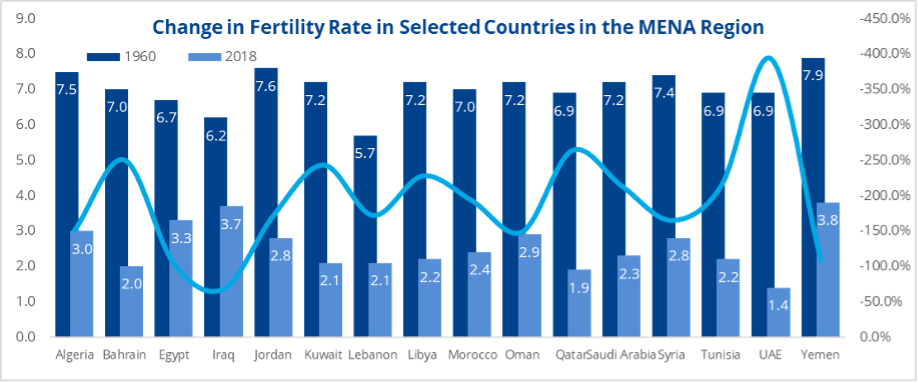
Sources: World Development Indicators, UNESCO, International Labour Organization, Colliers Research 2021
UAE, Saudi Arabia, and Egypt: the regional “hot-spot”
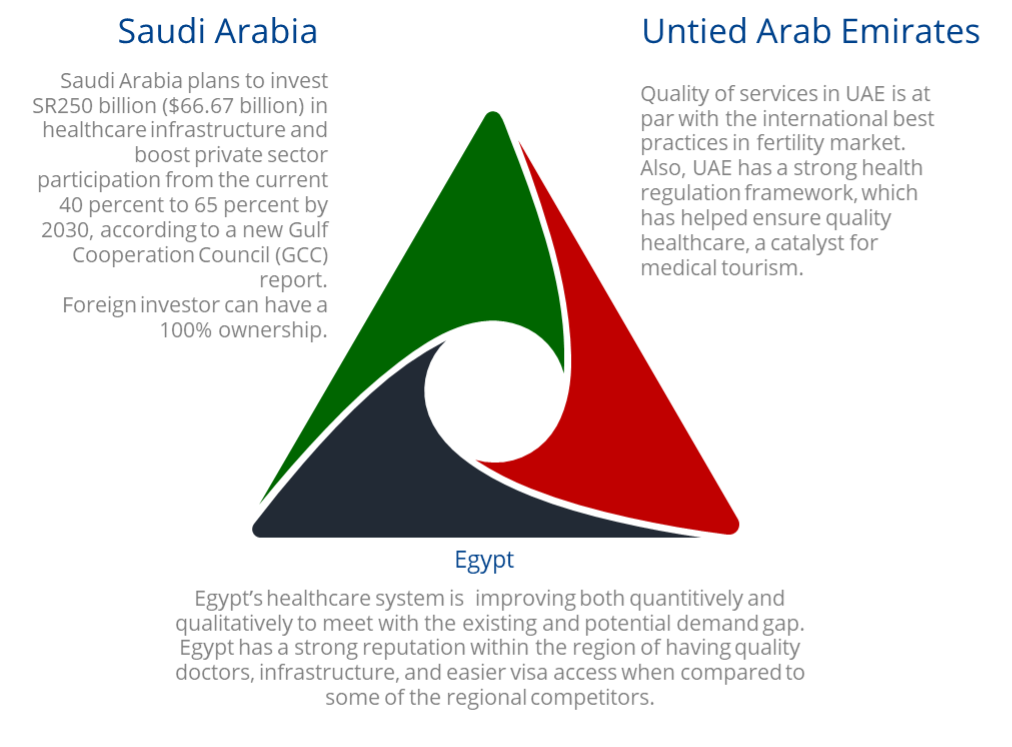
Cost of IVF treatment/cycle
Due to the high success rates and quality of treatment offered, the UAE is in the best position to become the regional hub in IVF. Pregnancy rates in the UAE are higher than the average of IVF centres in Europe or the U.S. and are comparable with the success rates of the best centres in the world.
The higher cost of treatment as compared to other countries in the UAE is considered the major limiting factor for more patients coming from abroad. However, based on Colliers’s discussions with major providers in the UAE, “high success rates and quality are directly related to the significant investments made in this sector both in equipment and staff. If treatment fees for IVF are substantially reduced, it will have an impact on the UAE’s ability to retain that talent. Failure to do so can jeopardise the quality of treatment that is being currently offered”.
It is expected that the focus of the UAE will remain on attracting medical tourism willing to pay a premium for “high quality - high success rate”.
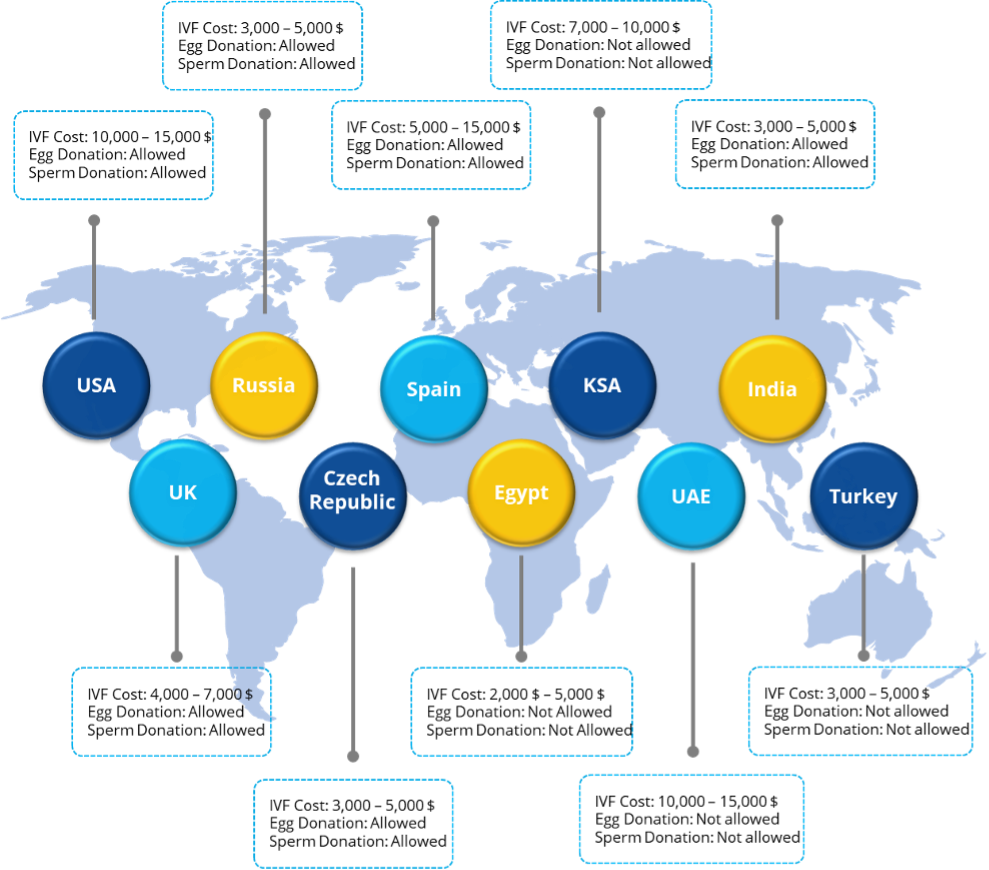
Impact of COVID
Like most elective procedures, IVF activity took a hit at the beginning of the pandemic. Embryo transfers slowed as the sector awaited guidelines from the Dubai Health Authority (DHA). To restart the embryo transfer, clinics adopted COVID-safe protocols. Fertility clinics, as with much of the healthcare industry, increasingly turned to telehealth in 2020.
Attractive returns
The IVF market in the MENA region is quite a lucrative investment. A mid-size premium facility set-up cost ranges from US$2.5 million to US$3.5 million excluding rent or construction cost. Earnings before interest, tax, depreciation, and amortization (EBITDA) margins for efficiently run clinics at optimal capacity typically range between 25 per cent to 40 per cent. Project investment returns (IRR) typically range from 18 per cent to 25 per cent.
Changing IVF laws
The new changes in IVF laws are also expected to further boost the IVF market. One of the most fundamental changes introduced by the new IVF law for fertility patients relates to the freezing of human embryos as well as unfertilised eggs and sperm.
The new IVF law also introduces a framework for intragovernmental consultation and decision making, and allows limited scientific research, in the field of fertility treatments. These changes are in line with the UAE’s National Agenda 2021 and the UAE Centennial 2071 project, which aim to elevate the UAE’s position in the global community and are especially important as the UAE positions itself as the go-to medical hub in the region.
Market growth potential
The IVF market in the UAE is relatively stable with a total number of 15,000–16,000 cycles performed per year. The growth of the market will be driven primarily by population expansion, but other factors that could amplify demand include increases in the incidence of infertility due to lifestyle changes and a rebound in IVF medical tourism — once the travel restrictions are lifted — particularly given the better quality, infrastructure, and success rates in Emirates.
Moreover, it is expected that the new IVF law will provide more options to couples who are looking IVF as a means to conceive babies. Moreover, the new law also will further establish UAE as a key destination for couples seeking IVF treatments regionally and internationally.
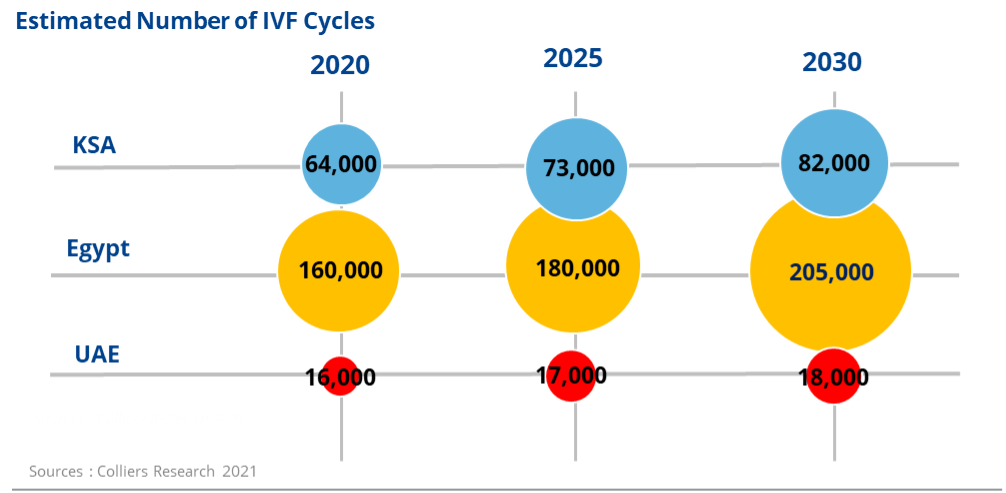

Mansoor Ahmed
This article appears in the latest issue of Omnia Health Magazine. Read the full issue online today.


